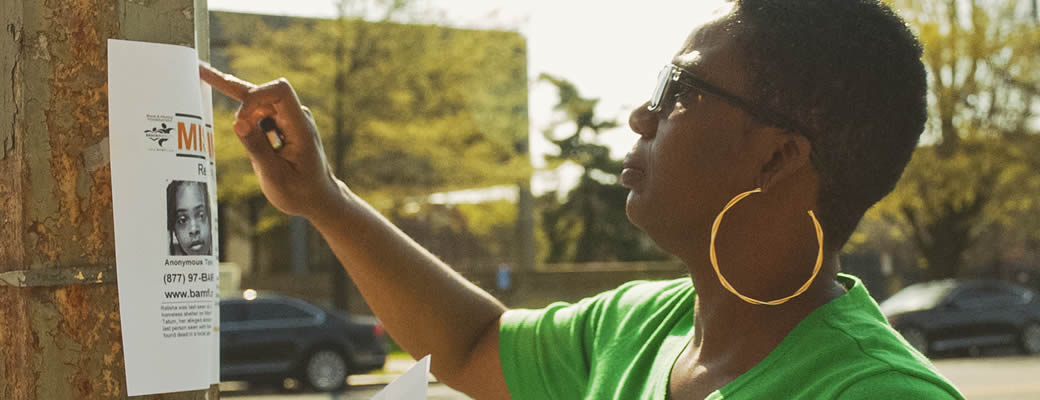Media, police pay less attention to missing Black people. HBO’s new doc wants to change that.
USA Today
Erin Jensen
November 23, 2021
The flood of news coverage that followed Gabby Petito’s disappearance last summer surprised even her own father.
“If you don’t do that for other people (who) are missing that’s a shame, because it’s not just Gabby (who) deserves that,” Joseph Petito told the media assembled at a Sept. 28 press conference. “Look to yourselves on why that’s not being done.”
Petito, 22, didn’t return from a summer road trip with her fiancé Brian Laundrie, and was later found dead from strangulation. Her sparkling blue eyes, blonde locks and bright smile were fixtures on news programs, just like Natalee Holloway, another young, white woman who disappeared in 2005 while celebrating her high school graduation in Aruba.
Rebkah Howard remembers a nation captivated by the Holloway story as she fought for national media coverage for her niece Tamika Huston – a 24-year-old Black woman who went missing in 2004 – to keep police motivated to solve the case.
“I was sending (press) releases, I was calling producers, I was calling news desks, every network, every website I could think of, and I hit a brick wall,” the publicist says in HBO’s docuseries “Black and Missing” (now on HBO). “In my mind, I’m thinking, ‘Well, here’s my niece. She’s young, she’s beautiful, she’s missing. Her story is just as compelling.’ The only difference is that Tamika’s Black; Natalee Holloway is white.”
The new series focuses on the Black and Missing Foundation, co-founded by sisters-in-law Natalie and Derrica Wilson in 2008 when they noticed the same imbalance for Huston who’s from Derrica’s hometown of Spartanburg, South Carolina.
“Black and Missing” spotlights several such cases and examines why, as the series claims, “cases of missing Black people remain unresolved four times longer than those of white people.”
Adrien Sebro, an assistant professor of media studies at The University of Texas at Austin, attributes the gap to media coverage of the victims. “With newsrooms that are largely led by white men, it often comes up the idea of ‘What’s marketable?’ or ‘Who are desired and respectable?’ as far as who’s going to get attention,” he says. “All these people who are missing deserve coverage, but there is a very clear over-representation in media when white women go missing and an under-representation when Black, brown or indigenous women go missing.”
Natalie and Derrica were “willing to be the solution,” Derrica says. “With my background in law enforcement, (and) Natalie’s background in public relations, those are the two critical professions needed to find our missing individuals.”
Adds Natalie Wilson: “We can name the Natalee Holloways, the Chandra Levys, the Gabby Petitos. This is no disrespect to their families, but our missing matter too.”
The FBI (using statistics from the National Crime Information Center’s Missing Person and Unidentified Person Files) reports Black people accounted for 32% of the 89,637 missing person cases in 2020, but made up just 12% of the population, according to Census data.
“As African Americans, we are far more vulnerable to being preyed upon by predators and traffickers, especially when it comes to grooming and luring,” Natalie says in the docuseries. “These predators know that no one will be looking for these Black children because their lives are not valued.”
Derrica Wilson tells USA TODAY the cases of missing Black people are often ignored. “Our children are oftentimes classified as runaways,” she says, which means they do not qualify for an Amber Alert, an emergency message issued when a child is abducted.
“When it comes to missing men and women of color, their disappearance is associated with some sort of criminal activity, which dehumanize(s) and desensitize(s) the fact that they are missing. “It starts with law enforcement and then it goes, of course, to the media not sharing the cases because the cases are not taken seriously.”
The organization helps families with missing children learn how to make their case to the media.
“There’s so many biases: if you look a certain way, if you talk a certain way, even the photos that we share on social media. If it isn’t presentable, people don’t tend to ‘like’ or share them,” Natalie says. “We want the families to connect with the audience, and we know that they only have a couple of seconds to do so, and we want to change the narrative that the missing person is involved with some type of criminal activity, or their life doesn’t matter. So it’s so important to make sure that they can come across a certain way.
“I’ll be quite honest,” she continues, “as a Black mother, you cannot come across as an angry Black woman because people tend to see Black women as angry, and we’re not. We’re frustrated by the system many times.”
Journalist Gwen Ifill first spoke of “Missing White Woman Syndrome” at a Unity: Journalists of Color conference in 2004. She joked: “If there’s a missing white woman, we’re gonna cover that, every day.” But 17 years later, “Black and Missing” executive producer Soledad O’Brien says coverage of disparities in media attention has been limited. “People only now are starting to say, ‘Who are these other women? What’s happening systemically that they’re being ignored, or just not being considered?'”
Sebro welcomes the new attention, acknowledging the new awarenessof racial injustices, police brutality and systemic racism.
“Media companies know that it’s time they need to talk about these types of things,” he says. “No longer can these things be ignored.”
Photo credit: HBO

